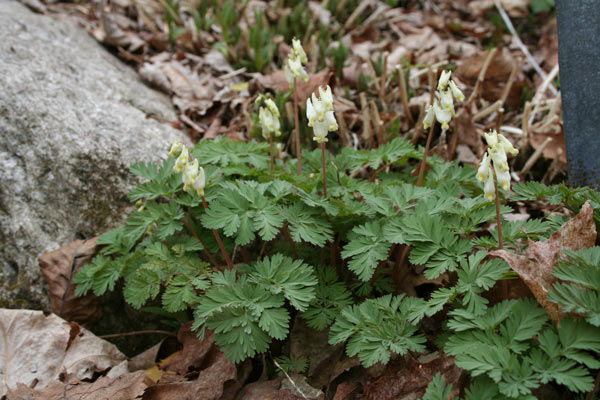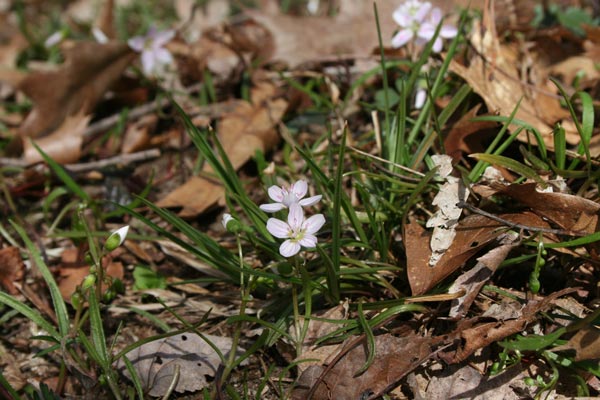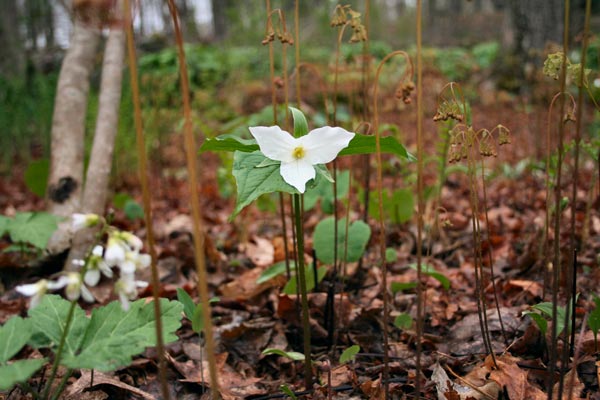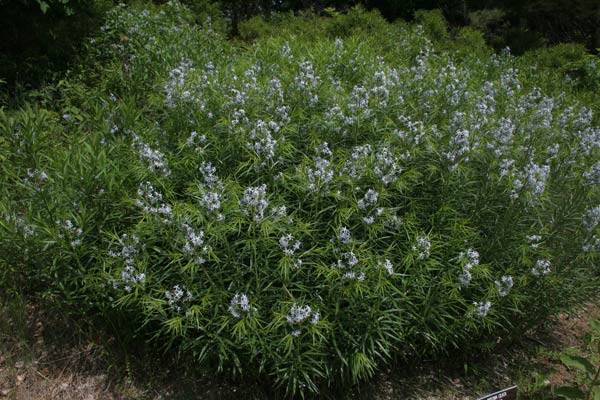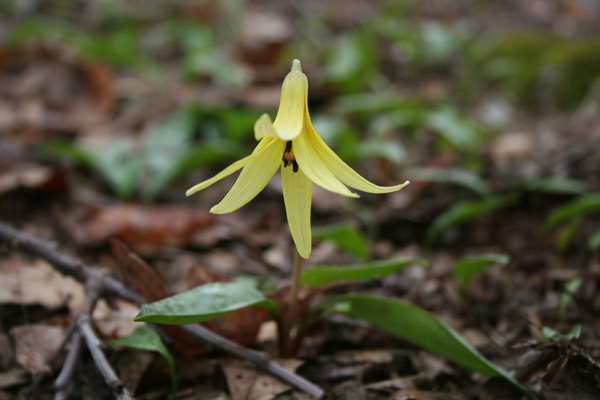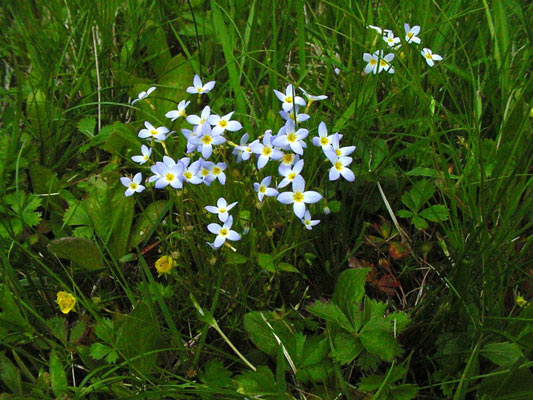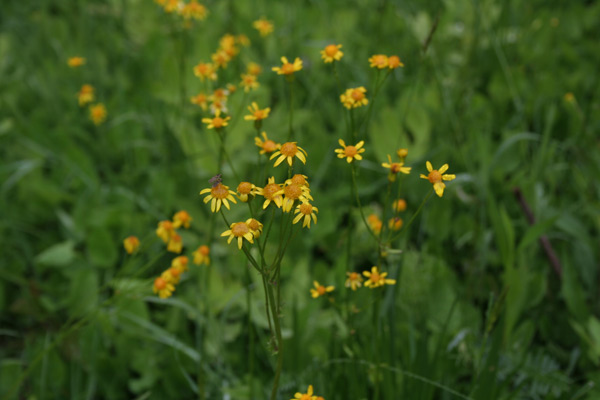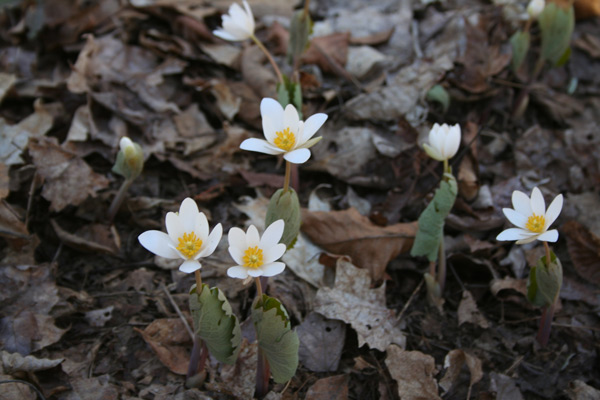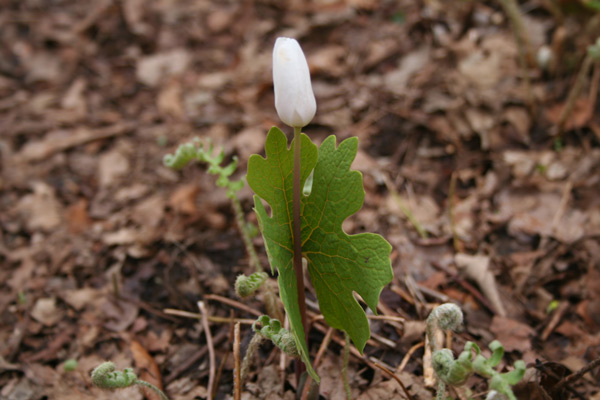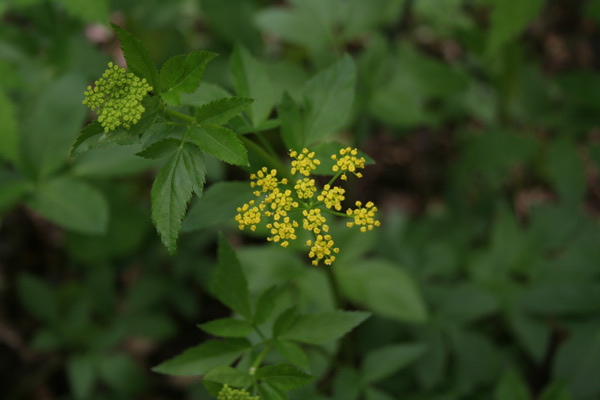By Leslie Duthie, New England Botanic Garden Volunteer
April 2024
Spring at New England Botanic Garden is always really spectacular. After winter, spring is often a favorite season because growth begins outside – whether bulbs, perennials, shrubs or trees, everything bursts forth with new life. While many people anxiously await the appearance of snow drops, winter aconite, crocus, and forsythia I’m a little different. The vision of spring I look forward to each year starts a little later.
I spent my career as a horticulturist working with native plants. Native plants tend to be a little slower to emerge than bulbs. They are not fooled by warm days in March only to be frozen by a passing snowstorm or temperature drop. Well, except for skunk cabbage (Symplocarpus foetidus) or spring witch hazel (Hamamelis vernalis). Skunk cabbage usually starts blooming in March, the flowers produce heat to warm early insects who may take refuge in the flower on cold nights or late winter snowstorms. Because the flower is close to the ground, in wetlands, and pretty thick-skinned it is able to withstand freezing temperatures. Spring witch hazel also tolerates those cold snaps from late February through actual spring. This plant has adapted to cold weather by closing its flowers when the temperature drops, protecting them from freezing.
Take a stroll into the Inner Park in April to note the beauty of our native spring ephemerals. The flowers are sometimes fleeting, making them precious and stunning to find. If spring arrives slowly and with gradually warming temperatures and cool nights these plants can make an amazing show with lots of flowers waving in the breeze. Dutchman’s breeches and squirrel corn (Dicentra cucullaria and D. canadensis) are among the first to arrive, with pure white flowers on short, arching stems. Their foliage is soft gray-green and just as delicate as the flowers. Carpets of spring beauty (Claytonia virginica) appear with short, grass like foliage and the most amazing dime-size flowers, white with faint pink stripes through the petals. If you take the time to get down and look closely, you can even notice that the pistils are pink as well. Bloodroot (Sanguinaria canadensis) is most fleeting – its flowers lasting for only a day or so – but those flowers! Large white poppy-esque petals and bright yellow stamens are perfectly paired with another ephemeral, the trout lily (Erythronium americanum), whose dappled leaves resemble trout bodies. Bright yellow lily-like flowers look too large for this diminutive plant. Rue anemone (Thalictrum thalictroides) is another early ephemeral, but unlike the fleeting species mentioned above, this one will continue to bloom for almost two months from its first flower to its last. The small pinkish-white blooms and delicate foliage are so pretty in the early garden.
As April fades and May starts, we see a surge of wildflowers in the Inner Park. Plants emerge from every leaf-covered portion of the forest! Some still small like bluets (Houstonia caerulea) randomly line the paths and pop out of beds to show their clusters of tiny blue-ish flowers. Others grow taller. Blue cohosh (Caulophyllum thalictroides) starts sending up deep purple shoots of leaves and the baneberries (Actaea pachypoda, A. rubra) send up greenish shoots. Both plants grow to 24” to 36” before producing flowers. Trilliums or wake-robins also start popping out at this time. Great white trillium (Trillium grandiflorum) flowers look like dropped hankies in the forest. Phlox — both creeping phlox and wild blue phlox (Phlox stolonifera and P. divaricata) produce copious amounts of flowers as they appear — one carpeting the forest floor, while the other sprouts up to about 12.” Both produce a very faint lilac-like scent that attracts sphinx moths and native bees to their delicate flowers. Golden alexanders (Zizia aurea) and golden groundsel (Packera obovata) bloom with bright yellow flowers. Not to be outdone, the wood poppy (Stylophorum diphyllum) also blooms with bright yellow sunshine flowers complementing the soft blue of Virginia bluebells (Mertensia virginica), whose drooping bell flowers start pink and fade to blue.
In early to mid-May the woodland garden continues to be the place to be. Not only for people to take in these glorious colors and flowers, but for all our native insect species as well. May into June brings more flowers and more substantial plants. Bluestar (Amsonia ciliata, A. tabernaemontana) get to be about 3-feet in height and width both! They bloom with a true-blue star flower covering the shrub-like plant that emerges. Bowman’s root has small white star-shaped flowers that have a pink-ish blush to the flower and a deeper pink calyx (the part holding the flower) that is airy and beautiful in the garden. The plants grow to about 3’, but the flowers are smallish, and the leaves are divided and have a toothed edge, making them appear ruffled. Solomon’s seal — the true form (Polygonatum biflorum) and all its associates (Maianthemum spp.) — begin to bloom. True Solomon’s seal (P. biflorum) has hanging bell flowers beneath the arched stem and comes in two forms. The common one grows to about 12” but the tetraploid form reaches 3’ easily. Starry Solomon’s seal (Maianthemum stellatum) has star-like flowers and berries that look like olive green and maroon beach balls with their color variations. False Solomon’s seal (Maianthemum racemosum) can be hard to establish, but the patient are rewarded with large plumes of white flowers that turn into bright red berries in late summer.
All these native plants that you can enjoy from early to late spring at the Garden are very appropriate for your home garden. Most will tolerate average soils and grow where the sunlight may be a bit limited. Some will tolerate full sun, but most like a shaded garden with humus-y soils. So, take a walk in the Inner Park –there are lots of beautiful native plants waiting to show you how great they could look in your yard, too.
*Featured image: Virginia bluebells (Mertensia virginica)
Plants pictured above in order of appearance: trout lily (Erythronium americanum), bluets (Houstonia caerulea), golden groundsel (Packera obovata), bloodroot (Sanguinaria canadensis), and golden alexanders (Zizia aurea)
About the Author
Leslie Duthie worked as a horticulturist growing, planting, and caring for native plants for over 40 years. Now retired, she enjoys all kinds of gardening. Volunteering at NEBG, Leslie cares for its historic apple orchard. She also serves as a board member of the Ecological Landscape Alliance, an organization educating people about ecological gardening practices.

